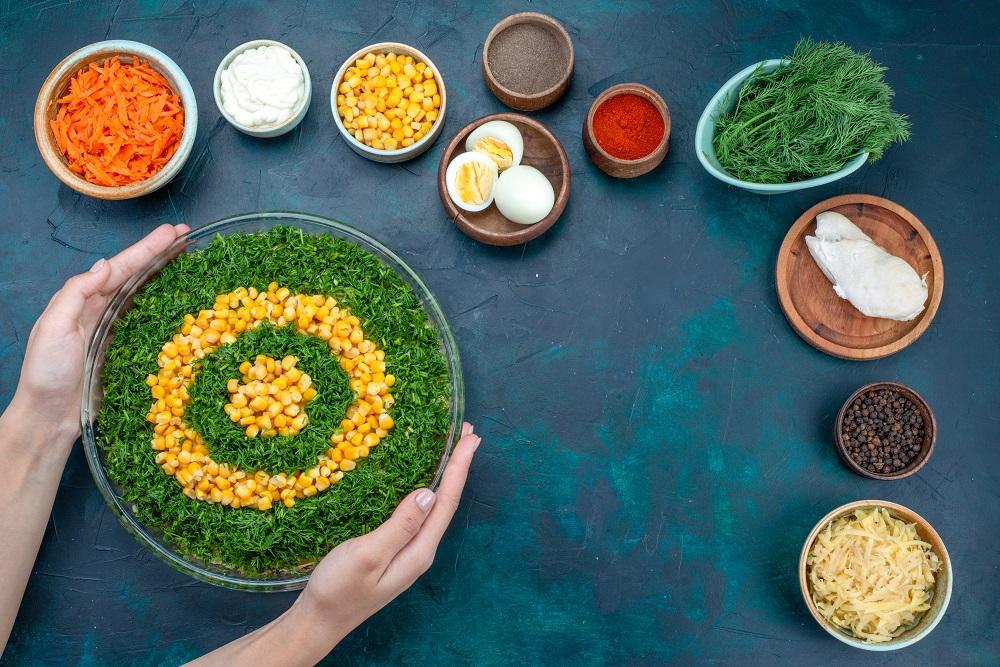What Should a Healthy Plate Look Like? A Simple Guide to Balanced Eating
We frequently hear the expression “you are what you eat,” and there’s a good reason it’s stood the test of time. The food we put on our plates has a direct impact on our health, energy situations, and indeed our mood. But in a world full of style diets, fast food, and clashing nutrition advice, understanding what a healthy plate should really look like can feel inviting.
The verity is, eating well doesn’t have to be complicated. A well-balanced plate includes the right blend of macronutrients (carbohydrates, proteins, and fats), as well as essential micronutrients like vitamins and minerals. In this companion, we’ll explore the structure blocks of a healthy plate and how you can apply this knowledge to your everyday refections.
Half Your Plate Vegetables and Fruits for Vital Nutrients
The foundation of any healthy mess starts with factory-based foods. Immaculately, half your plate should be made up of vegetables and fruits. These various foods are nutritive bootstrappers, rich in salutary fiber, vitamins, and antioxidants that cover your body against complaint and support digestion.
Spinach, kale, carrots, and broccoli are good choices because they contain so many nutrients-per-calorie groups. Fruits like apples, berries, and oranges not only satisfy your sweet tooth but also offer vulnerable-boosting composites. Choosing a variety of colors ensures you are getting a broad diapason of nutrients.
A Quarter Plate of Whole Grains Energy That Lasts
On your plate, whole grains should represent one-fourth. Your body utilizes complex carbs for energy over extended periods. Whole fiber and essential whole grains are compared to sophisticated grains for B vitamins, iron, and magnesium; Whole grains are only made of bran and kim.
Including grain foods such as brown rice, quinoa, whole wheat pasta, oats, or barley in your meals will help regulate blood sugar levels, keep you feeling full for a longer period, and promote heart health.
The Final Quarter Spare Protein for Growth and Form
Protein is one of the most essential nutrients for maintaining and repairing body apkins, erecting muscles, and supporting vulnerable function. The remaining quarter of your plate should contain spare protein sources. This includes beast-based options like funk, lemon, eggs, and fish, as well as factory-based druthers like tofu, lentils, sap, and chickpeas.
Still, factory-based diets aren’t only healthy but also environmentally friendly, if you are exploring a more factory-forward life. You can read further about protein as a nutrient to see how it works in the body and why it’s important to include in every mess.
Healthy Fats The Right Kind in the Right Amount
Fats frequently get a bad character, but not all fats are created equal. Healthy fats are vital for brain function, hormone product, and the immersion of fat-answerable vitamins like A, D, E, and K. You don’t need a large quantum — just a small serving of fats from good sources can make a big difference.
Including grain foods such as brown rice, quinoa, whole grain pasta, oats or barley will help to regulate blood sugar levels in your food, feel full for long periods and will promote heart health. Dive deeper into the benefits of olive oil painting and why it’s a chief in numerous healthy diets.
Hydration The Silent Player on Your Plate
Though it’s not commodity you eat, hydration plays a critical part in your overall health and how your body uses the food you consume. Water supports nearly every function in your body — from regulating temperature and flushing out poisons to abetting digestion and perfecting brain performance.
Rather of sticky tonics or energy drinks, aim to drink plenitude of water throughout the day. However, try investing it with bomb, cucumber, if plain water isn’t your thing. Staying doused can help help fatigue, headaches, and indeed sugar jones. Read further about the significance of hydration and how to fete the signs of dehumidification.
Why a Balanced Plate Matters
Creating a well-rounded plate is not just about nutrition — it’s about erecting long-term habits that promote overall good. A balanced plate can help help habitual conditions like diabetes, heart complaint, and rotundity, while also supporting your diurnal energy, internal focus, and emotional health.
It’s important to flash back that no single food provides everything your body needs. That’s why variety is crucial. By eating a blend of foods from all five food groups, you’re giving your body the tools it needs to thrive.
Final Studies Making the Healthy Plate a Diurnal Habit
Structure a healthy plate is lower about restriction and further about balance. It’s not about cutting your favorite foods, but is purposeful of what fills your plate. Whether you are cooking at home or eating out, you can have this simple visual model in mind helping to correct your choice.
Start small. Add further flora to your lunch. Exchange white chuck for whole grain. Choose water rather of soda pop. Over time, these small changes add up to big results. The trip to more health really can begin with one mess — one plate — at a time.
